Living as a Digital Nomad in Chile: A Complete Guide
Live the experience of being a digital nomad in Chile: Find out about visas, cost of living and the best cities to work in this country.
If you’re considering being a digital nomad in Chile, you’re in for an incredible experience. With its mix of indigenous traditions, European heritage, and diverse landscapes—from deserts to glaciers—Chile is the perfect destination for nature-loving digital nomads.
In this article, you’ll find everything you need to know to make the most of your time here, from visa details and cost of living to practical tips for living and working as a digital nomad in Chile.
Why choose to live as a digital nomad in Chile?
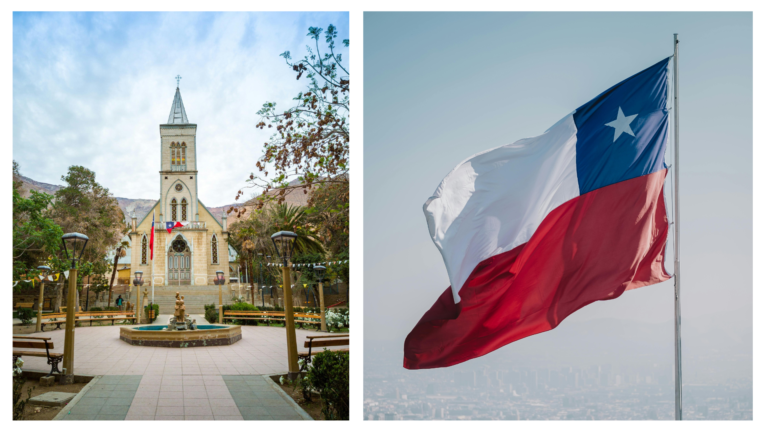
Opting for Chile as your next destination as a digital nomad comes with many benefits. The country offers a great quality of life, a vibrant cosmopolitan vibe, and a growing tech scene. Its cities are clean, safe, and have reliable access to essential services. Chile’s urban areas also enjoy high safety levels and modern infrastructure.
The warmth of the people makes you feel welcome right from the start. The food scene, with dishes like asado, empanadas, and pisco sour, is another big draw.
Finally, Chile’s internet connectivity and speed surpass countries like China and the United States, with an impressive 263 Mbps. It’s the fourth fastest country in the world for broadband speed—definitely a huge plus for any online professional.
Visas that allow legal residence in Chile
One of the key things to keep in mind is the digital nomad visa in Chile. While there isn’t a specific visa for digital nomads yet, there are several other options that can suit your needs.
1. Temporary residence visa
This visa is ideal for those who want to live in Chile as digital nomads for a longer term. It can be renewed each year, making it the perfect choice for nomads who plan to stay for over a year.
2. Work visa
This option is for those who have secured a job in Chile. The visa is valid for one to two years, depending on the terms of your contract. It’s important that the company hiring you is legally registered in the country.
3. Student visa
If you choose to enroll in a course in the country, this visa allows you to work part-time. It’s a great option if you plan to learn Spanish or pick up new skills while working.
For more details on this process, check out our article on the digital nomad visa in Chile to learn about the requirements, costs, and details of each visa option.
Where to live and work as a digital nomad in Chile
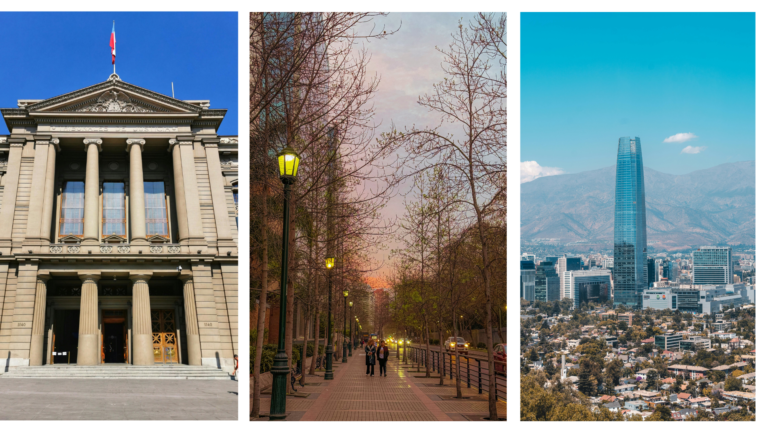
Santiago
The capital offers a variety of coworking spaces and has a thriving digital nomad community. The city’s cultural scene is lively, with plenty of theaters, museums, and festivals all year long. Areas like Barrio Lastarria and Bellavista are great for meeting other professionals and socializing.
Valparaíso
With its relaxed coastal atmosphere and artistic flair, it’s the perfect place for those looking for inspiration and a slower pace of life. The city is full of street art and has a rich history. It’s also a great spot to enjoy local cuisine and Chilean wine.
Concepción
Less crowded than Santiago, Concepción offers a lower cost of living and is ideal for those looking for a quieter environment. The city has a university vibe and a strong cultural scene.
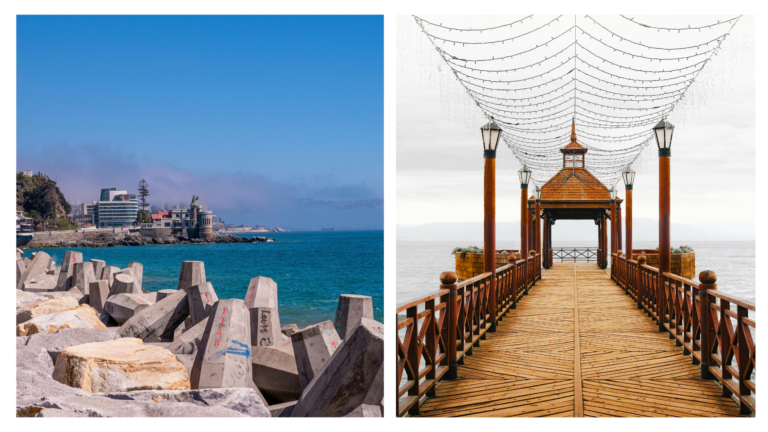
Accommodation options
| Colivings | Colivings are shared spaces where you can live and work at the same time. Places like Selina offer private rooms and common spaces with high-speed internet, starting at $450. |
| Hotels and hostels | Options range from affordable hostels to luxury hotels. In Santiago, Hostal Forestal offers beds in shared dormitories from $15 per night, while Hotel Cumbres Lastarria has rates around $150 per night. |
| Home exchange | Platforms like HomeExchange allow digital nomads to exchange their home for a stay elsewhere, an interesting choice in case you have flexible plans. |
| Other | To find accommodation, platforms like Airbnb, Booking and Couchsurfing are very useful. |
Coworking Spaces
Coworking spaces in Chile are abundant and offer a variety of services.
- Urban Station: Located just steps from the El Golf metro station in Santiago, this place offers private offices and comfortable workspaces available for a few hours.
- COWO: Offering a more relaxed atmosphere, this space located in Puerto Montt, Los Lagos offers rates starting at $200 per month.
- WeWork: With several offices in Santiago, perfect for those looking for a professional environment. Monthly membership prices start at $300.
Prices do vary, but you can find spaces from $150 to $400 per month, depending on the location and services offered.
Internet connection
Internet speed in Chile is among the best in Latin America and the world, according to Statista’s Speedtest ranking.
Say goodbye to connection worries—Holafly has you covered during your digital nomad journey in Chile. Our unlimited data travel eSIM gives you high-speed internet across various destinations in Chile, and you won’t need to change your SIM card!
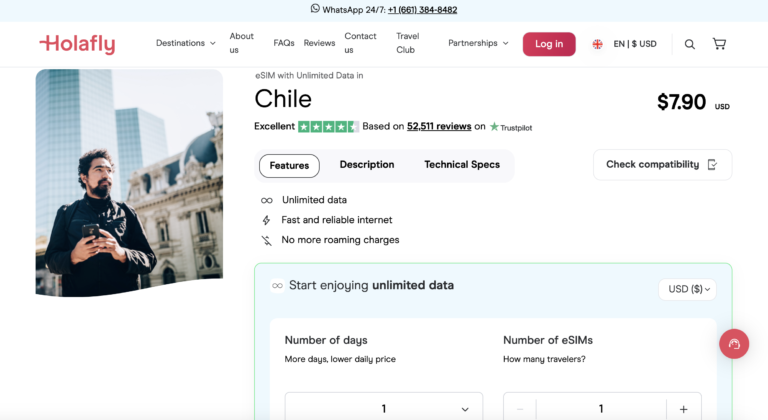
Here are some recommendations of public spaces with internet connection in Chile:
| Libraries | –National Library (Santiago): Besides being a cultural space, it has work areas and internet connection. –Library of Santiago: A quiet place with good infrastructure for work. |
| Parks and public squares | –Parque Forestal (Santiago): Although the connection can be irregular, it is a beautiful place to work outdoors. –Plaza Sotomayor (Valparaíso): A place to enjoy the view while working, with some areas that have a good connection. |
| Cultural centers | –La Moneda Cultural Center (Santiago): Besides exhibitions, it has areas where you can work and connect to the Internet. |
Taxes to be paid by a digital nomad in Chile
Tax residents and tax obligations
If you live for over 183 days as a digital nomad in Chile, you may be considered a tax resident and would be required to pay taxes on your worldwide income.
Chile has tax treaties with over 30 countries, including Spain, France, Germany, and the UK, which can help you avoid being taxed in both countries.
Health insurance and health service quality in Chile
Digital nomads in Chile have access to both public and private healthcare systems. However, it’s recommended to have private health insurance, as care at private clinics tends to be faster and of higher quality.
While most doctors speak Spanish, you’ll find English-speaking staff in more touristy areas. If you’re not fluent in Spanish, it’s a good idea to use a translation app or interpretation service.
Recommended health insurance
Some health insurance options for digital nomads include:
- World Nomads: With global coverage and plans tailored to the needs of travelers.
- SafetyWing: Catering specifically to digital nomads, it offers affordable and flexible health insurance.
- Allianz: Offering a variety of plans that can include coverage for extreme sports and travel.
Important: If you are a frequent traveler and want to stay connected without worrying about expensive roaming or looking for a new SIM at every destination, Holafly’s subscription plans are for you. With a single eSIM, enjoy internet in more than 170 countries for a fixed price and no surprises on your bill. travel without limits and connect easily and securely! 🚀🌍

Basic living expenses for a digital nomad in Chile
Transport and mobility
Transport in Chile is efficient. You can use the Transantiago in Santiago, which combines buses and metro.
Metro rides typically cost around $1. You can also get around by taxi or rideshare services like Uber and Cabify. The prices are quite reasonable, usually varying based on distance, with short trips generally costing between $3 and $10.
Driver’s License
Digital nomads in Chile can use their foreign driver’s license for up to one year. If you stay longer, you must obtain a Chilean license.
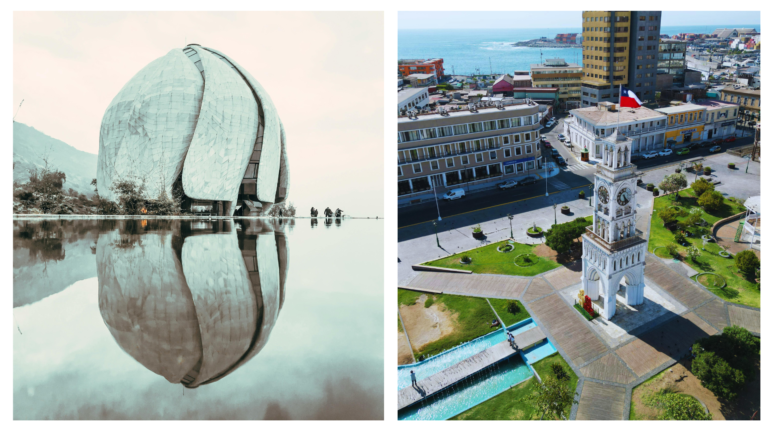
Managing finances of a digital nomad in Chile
For foreigners in Chile, Banco de Chile, Banco Santander, and BancoEstado are some of the top choices. Many of these banks offer accounts with no monthly fees, provided you keep a minimum balance.
Banco Falabella is a solid digital banking choice for digital nomads in Chile. It allows you to open accounts online and offers services to non-residents. Through its mobile app, you can easily handle transfers, payments, and manage your finances.
Another option is Revolut. While it’s not a Chilean bank, it allows you to open an account without being a resident. It provides currency exchange, transfers, and a prepaid card, making it perfect for digital nomads exploring the country.
In Chile, banks generally charge a commission of approximately $5 for withdrawals at ATMs that do not belong to their network.
Food expenses in Chile
The most popular supermarkets are Lider, Unimarc, and Tottus and food prices can vary. A meal at a budget-friendly restaurant typically costs between $10 and $15, while dining at more upscale places can cost $30 or more.
For cheaper options, local markets provide fresh produce at reasonable prices. If you plan to cook, you can expect to spend between $50 and $100 a week on food, depending on your eating preferences.
Entertainment for digital nomads in Chile

There’s no shortage of things to do in Chile. Whether it’s hiking in the Andes for stunning views or enjoying cultural festivals in cities like Santiago and Valparaíso, there’s always something to do.
Santiago offers a dynamic urban scene, with cultural gems like the National Museum of Fine Arts. Valparaíso, known for its vibrant architecture and street art, is a great place to explore.
Don’t miss the Atacama Desert for its unique landscapes and clear skies, and Easter Island for its fascinating history and culture.
The cost of entertainment varies. Movie tickets typically range from $5 to $10, while tickets for cultural events or festivals can be anywhere from $10 to $50. Guided tours or excursions usually cost between $150 and $600.
Best seasons to travel to Chile

The climate varies depending on the region. Spring (September-November) and autumn (March-May) are perfect for enjoying the country.
If you prefer winter, temperatures can drop considerably, especially in the south.
What you wear will depend on where you’re heading, so be sure to check the local weather. In Santiago, light clothing is ideal for summer, while you’ll need warmer layers in winter. In southern regions like Patagonia, be prepared with gear for cold and rainy conditions.
Cost of living as a digital nomad in Chile
The cost of living in Chile for a digital nomad can range from $800 to $2,000 a month. Depending on the city and your lifestyle, Chile offers options for all budgets.
| Expenses | Low range (in dollars) | High range (in dollars) |
| Accommodation | 300 | 800 |
| Food | 200 | 400 |
| Transport | 50 | 100 |
| Coworking space | 150 | 400 |
| Leisure | 100 | 200 |
| Monthly total | 800 | 2,000 |
Frequently asked questions about being a digital nomad in Chile
Santiago is a favorite among digital nomads thanks to its diverse coworking spaces, rich cultural scene, and lively community. Valparaíso is also a great option, loved for its creative energy and laid-back atmosphere.
You’ll find a variety of options like colivings, hotels, hostels, and Airbnb, making it easy to find short-term accommodation that suits your budget.
It’s not mandatory, but having private health insurance is highly recommended to ensure quality care and avoid unexpected expenses in case of emergencies.
Yes, banks such as Banco Falabella and Revolut allow foreigners to open accounts online, making it easier to manage finances while in the country.
Getting around is easy and budget-friendly, especially in Santiago, where the metro and buses are great options. If you prefer more convenience, rideshare services like Uber and Cabify are also widely available.
If you’re offered a job, you’ll need a work visa, while a temporary residency visa is ideal for longer stays. Make sure to review the specific requirements for your case.
Spring (September to November) and fall (March to May) are the best times to enjoy mild weather. Winters can get quite cold, especially in the south, while summers tend to be hot in northern cities.





 Language
Language 


















 No results found
No results found


